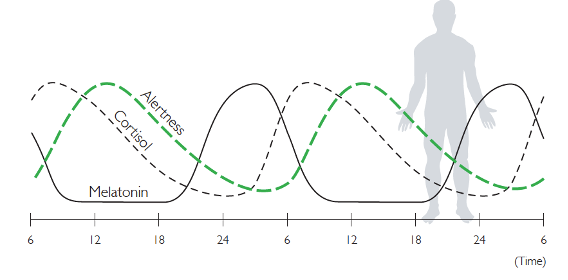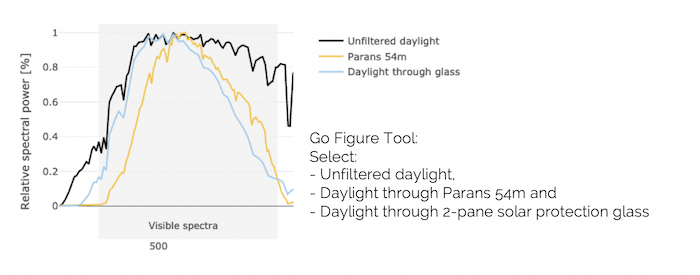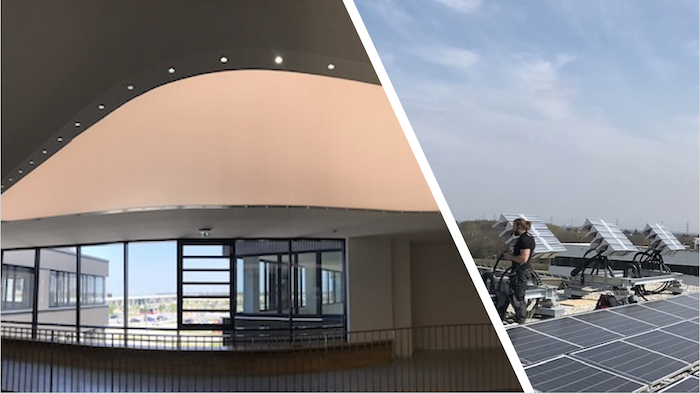
The most of us spend 90% of our time awake indoors. More and more people are becoming aware of the fact that the light we spend our time in affects us. With quality light we could enhance our well-being and productivity.

The daylight varies for different locations through the course of the day, the season and the year. This variation has positive influence on mood and stimulation, particularly in indoor work environments. While electric light sources can be designed to match a certain spectrum of daylight closely, none have been made that can mimic this variation.
CIRCADIAN RHYTHM
The human organs are orchestrated to work in harmony with each other, generating a body rhythm that is set everyday by daylight. This rhythm is called the circadian rhythm and regulates our sleep/ wake timing and levels of alertness. The natural light is rich in short wavelengths (blue light) that regulates the circadian system in our bodies. The light that is important to our circadian rhythm is different from the light that is important to our visual system. The circadian system is most affected by the wavelength region 446 to 488 nm, whereas the visual system is most affected by the wavelength around 555 nm.

The circadian rhythm is fundamental to the health and well-being in the long term. Preliminary evidence suggests that low light exposure with wrong spectrum and wrong time of day is associated with diminished health and well-being and can lead to reduced sleep quality, depressed mood, lack of energy and impaired social relations. Exposure to intense light in the morning can reset the biological clock to an earlier time whilst in the evening, it sets it to a later time. This is the syndrome of jetlag.

Daylight is recognized as having the highest levels of light needed for the biological functions compared with typical electric light sources. Natural sunlight has a continuous spectrum, while artificial light lacks many frequencies, that the human body requires for essential functions.
SUNLIGHT DEEP INTO BUILDINGS AND FAR AWAY FROM WINDOWS
With Parans’ solution you are able to create sunlight filled spaces in every building.
Thin, flexible fiber optic cables lead the sunlight far from windows and deep into the building where the sunlight from windows cannot reach. As common as it is to have windows along the facade and that way lead the natural light inside, as common it could be to lead sunlight via a Parans system deep into the building – to every room, on every floor.
One question we get is how is the light from a Parans system in compare with light from a window? The spectral distribution from a modern window is rather similar to a Parans system. Of course you are not able to look out via a Parans system and a Parans system does not replace a window but provides natural light in spaces where it is not possible to use windows. For instance 30 floors down from the rooftop or on the top floor when the roof is covered with other important solutions using renewable energy resources, such as solar panels.
Via Parans light tool “Go Figure Tool” it is easy to compare unfiltered daylight outdoors with daylight through Parans (cable length 54 m) and daylight through 2-pane solar protection glass.

At Technology Center Seestad in Vienna, Austria, the Parans systems have been installed and provide natural light via an “artificial” light shaft. This means that valuable space on the roof could be used for solar panels, but without compromising with quality light indoors!

Get the details on the importance of quality lighting and compare natural light with electrical light in different aspects to be able to create amazing light experiences for every generation. Download our go figure guide.